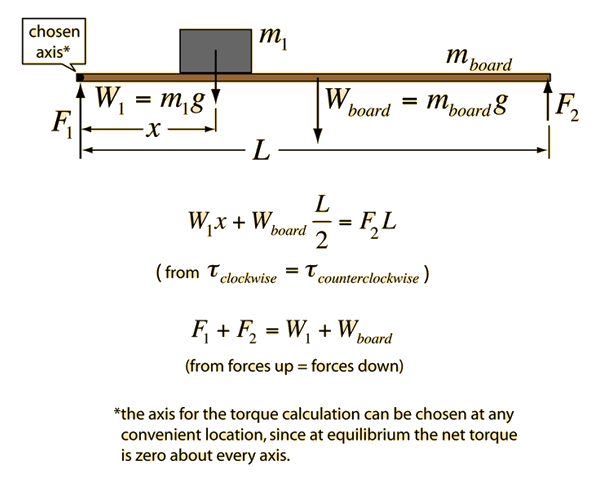Supporting an Extended Load
For an extended system to be at equilibrium, the sum of the forces must be equal to zero and the sum of torques about any axis must equal zero. It is logical to choose one of the ends as the axis since that eliminates one of the unknown forces (lever arm = zero). Considering a long uniform wooden board, note that the mass of the board can be considered to be concentrated at its center of mass for the purposes of calculating torque. For a uniform board, the center of mass is at its geometrical center, so the lever arm with respect to either end of the board will be L/2. Choosing the left end as the axis, the torque and force equilibrium equations are shown below.

Torque equilibrium examples
| HyperPhysics***** Mechanics | R Nave |